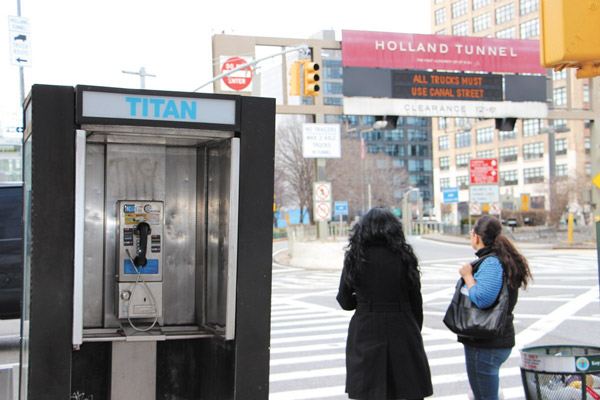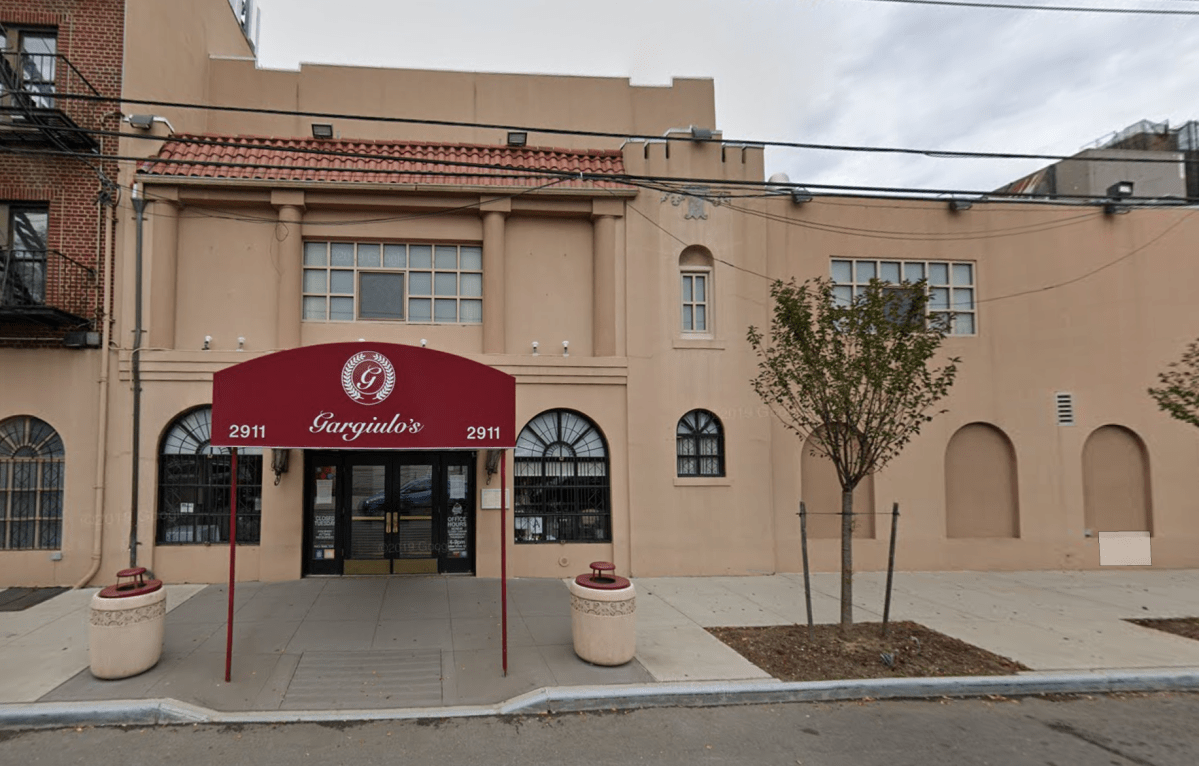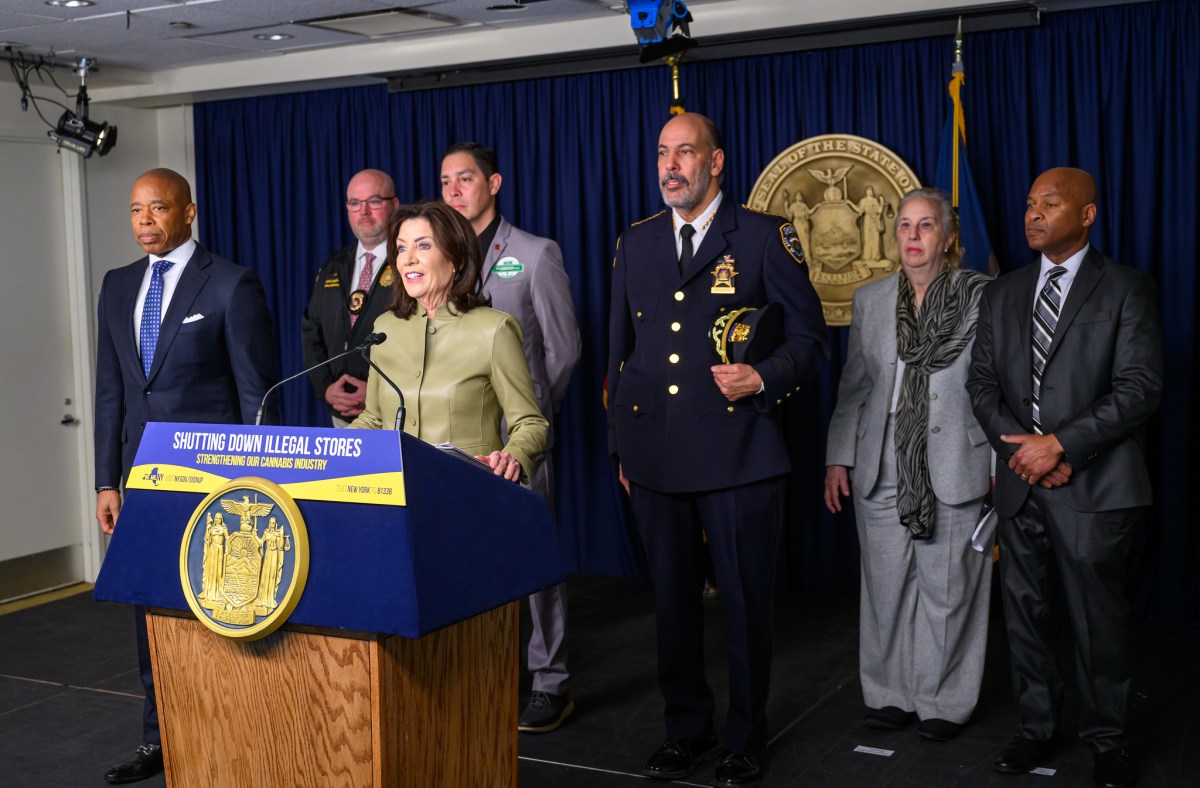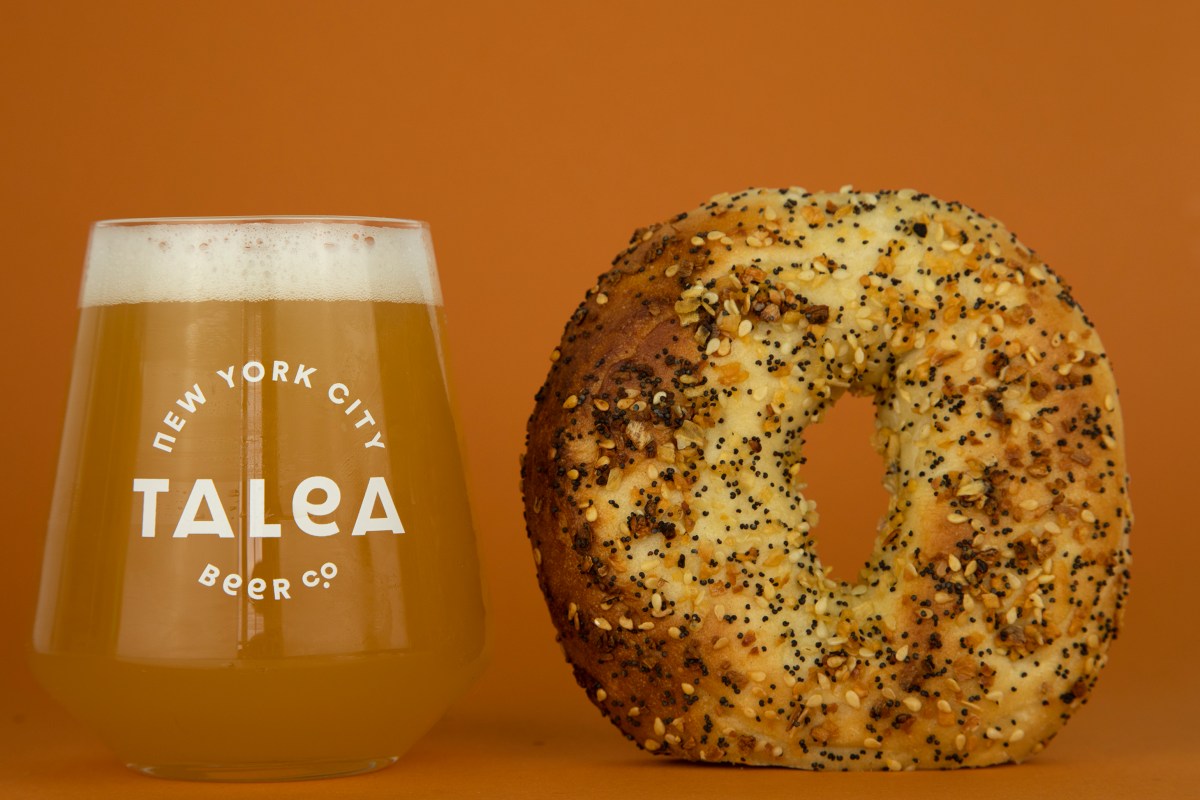
At 80 Varick, Seth Kamil, historian and founder of the Big Onion Tours, lectures via pay phone about the introduction of Metrocards at the Whitehall St. station
By KAITLYN MEADE | Remember those metal shells on every street corner; the ones mostly used now to shield cigarettes from the wind? Well those relics of 20 years ago are getting a new use thanks to the Bowery’s New Museum and independent advertising network Droga5. Dialing 1-855-FOR-1993 from any of 5,000 Manhattan payphones will connect listeners to the stories of their neighborhood two decades earlier.
The project, called “Recalling 1993,” features 57 storytellers, with new recordings rolling out throughout its run, from club kids and artists to tour guides and business owners. Most of the payphones will connect you to a person who lived or worked in that neighborhood in 1993. But occasionally a pay phone will connect you to a story specific to the street corner it is located on, about an event or nearby landmark.
From a phone at 200 Hudson St., outside 92YTribeca, one can hear the voice of DB Burkeman, a k a “DJ DB” — who rode the Acid house music wave from London to New York City. In 1993, he says Tribeca was a “ghost town” at night but also fertile ground for infamous raves at The Shelter, where “a thousand kids lined up down Varick St. after midnight was quite a sight.”
“I personally think it was the last really good year for nightlife in N.Y.C.,” says Chip Duckett from a payphone down the street. Duckett recalls starting his Friday-night “1984” parties at the now-defunct Crowbar, which was closed by former Mayor Rudy Giuliani a year later. Though the event continued at the Pyramid for over 17 years, he says 1993 was the start of a crackdown on club culture.
“Recalling 1993” will be running through the phone lines until May 26 and goes hand in hand with the New Museum’s exhibit “NYC 1993: Experimental Jet Set, Trash and No Star” at 235 Bowery (at Prince St). The exhibition, which takes its title from a 1993 Sonic Youth album, explores a cultural cross-section of art, both underground and mainstream, at a social and economic turning point in New York. It is curated by associate director Massimiliano Gioni, Gary Carrion-Murayari, Jenny Moore and Margot Norton.
It was not an easy project to set up, as it involved not only making extensive recordings but also collecting the numbers of all Manhattan pay phones through a mixture of publicly available data and manual scouting. The database of recordings was programmed with a caller ID system that could recognize pay phone numbers.
Calling from a regular land line or cell phone, however, gives you a message from Speed Levitch, an avant-garde tour guide who started his career in 1993, who directs you to “find a street corner and pick up the first payphone you lay eyes on and dial this number again… To find the closest phone, open your eyes, or go to Recalling1993.com to see a map of where they are.”


















